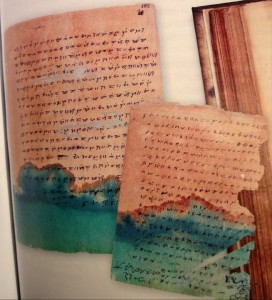
Baybayin Baybayin is a pre-Spanish Philippine writing system. It is a member of the Brahmic family and is recorded as being in use in the 16th century. It continued to be used during the Spanish colonization of the Philippines up until the late 19th Century. The term Baybay literally means "to spell" in Tagalog. Baybayin was extensively documented by the Spanish. Some have attributed it the name Alibata, but this name is incorrect. (The term "Alibata" was coined by Paul Rodriguez Verzosa after the arrangement of letters of the Arabic alphabet alif, ba, ta (alibata), “f” having been eliminated for euphony's sake." ) Versoza's reasoning for creating this word was unfounded because no evidence of the baybayin was ever found in that part of the Philippines and it has absolutely no relationship to the Arabic language. Furthermore, no ancient script native to Southeast Asia followed the Arabic arrangement of letters, and regardless of Versoza's connection to the word alibata, its absence from all historical records indicates that it is a totally modern creation. The present author does not use this word in reference to any ancient Philippine script. Modern scripts in the Philippines, descended from Baybayin, are Hanunó'o, Buhid, Tagbanwa, the Kapampangan script and the Bisaya script. Baybayin is one of a dozen or so individual writing systems used in Southeast Asia, nearly all of which are abugidas where any consonant is pronounced with the inherent vowel a following it— diacritical marks being used to express other vowels (this vowel occurs with greatest frequency in Sanskrit, and also probably in all Philippine languages). The term Baybay literally means "to spell" in Tagalog. Baybayin was extensively documented by the Spanish. Some have attributed it the name Alibata, but this name is incorrect. (The term "Alibata" was coined by Paul Rodriguez Verzosa after the arrangement of letters of the Arabic alphabet alif, ba, ta (alibata), “f” having been eliminated for euphony's sake." ) Versoza's reasoning for creating this word was unfounded because no evidence of the baybayin was ever found in that part of the Philippines and it has absolutely no relationship to the Arabic language. Furthermore, no ancient script native to Southeast Asia followed the Arabic arrangement of letters, and regardless of Versoza's connection to the word alibata, its absence from all historical records indicates that it is a totally modern creation. The present author does not use this word in reference to any ancient Philippine script. Modern scripts in the Philippines, descended from Baybayin, are Hanunó'o, Buhid, Tagbanwa, the Kapampangan script and the Bisaya script. Baybayin is one of a dozen or so individual writing systems used in Southeast Asia, nearly all of which are abugidas where any consonant is pronounced with the inherent vowel a following it— diacritical marks being used to express other vowels (this vowel occurs with greatest frequency in Sanskrit, and also probably in all Philippine languages). Origins Baybayin was noted by the Spanish priest Pedro Chirino in 1604 and Antonio de Morga in 1609 to be known by most, and was generally used for personal writings, poetry, etc. According to William Henry Scott, there were some datus from the 1590s who could not sign affidavits or oaths, and witnesses who could not sign land deeds in the 1620s. There is no data on when this level of literacy was first achieved, and no history of the writing system itself. There are at least six theories about the origins of Baybayin. Kawi Kawi originated in Java, and was used across much of Maritime Southeast Asia. Laguna Copperplate Inscription. The Laguna Copperplate Inscription is the earliest known written document found in the Philippines. Butuan Ivory Seal It is a legal document, and has inscribed on it a date of Saka era 822, corresponding to April 21, 900 AD Laguna Copperplate Inscription#cite note-bibingka-1. It was written in the Kawi script in a variety of Old Malay containing numerous loanwords from Sanskrit and a few non-Malay vocabulary elements whose origin is ambiguous between Old Javanese and Old Tagalog. One hypothesis therefore reasons that, since Kawi is the earliest attestation of writing on the Philippines, then Baybayin may be descended from Kawi. A second example of Kawi script can be seen on the Butuan Ivory Seal, though it has not been dated. An earthenware burial jar, called the "Calatagan Pot," found in Batangas is inscribed with characters strikingly similar to Baybayin, and is claimed to have been inscribed ca. 1300 AD. However, its authenticity has not yet been proven. Old Sumatran "Malay" scripts Another hypothesis states that a script or script used to write one of the Malay languages was adopted and became Baybayin. In particular, the Pallava script from Sumatra is attested to the 7th century. Sulawesi The Liboginese and/or Makassarese scripts of Sulawesi … [Read more...]
















